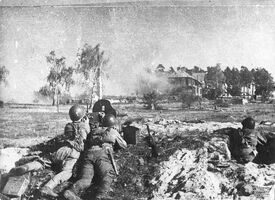Campaign of Tyrol[]
| Second Imperial Civil War |
|---|
| Corinth Catastrophe • Barcelona Revenge • Invasion of Bohemia (Operation Perun, Battle of Prague) • Campaign of Tyrol (First Battle of Tyrol, Siege of Vienna, Second Battle of Tyrol, Third Battle of Tyrol) Nuclear Attack on Paris • Nuclear Strike on Constantinople • Invasion of Libya (Raid on Alexandria) • Liberation of Rome • Siege of Marseille • Invasion of Italy • Invasion of France • Battle of Spain • Baltic Offensive • Baltic Counteroffensive • Invasion of Germany • Landing in Normandy • Invasion of Carpathia • Great Nuclear Strike • Fall of Lyon |
Background[]
Mountainous region of Tyrol was, in Supreme Imperial Command, targeted as main gate for invasion to Bavaria and Germany and so basic strategic goal, as Invasion of Germany was primary long term operational plan.
While Bohemia was conquered and Roman Empire already had control over north-eastern Germany and western Poland and Pomeranian, without third direction strike from Bavaria, Imperial Army would not be able to met with success.
Saint Atlantis defenders fully understand strategic priority of Tyrol defense and sent their best nobles and royals to defend this area, include mercenaries, various adventurers, military units composed of anti-Imperial emigrants and other forces.
However, situation was worsened for both side by participation of "Agrarian Army", or also called "Great Peasant Army". Rebelling Italian-speaking peasants and citizens, who were hostile toward Saint Atlantis for their policy and rule and toward Roman Empire, for imperial rule over Corsica and other Italian territories, as their final goal was independent and free Italia.
Campaign of Tyrol was serie of three, mostly unsuccessful, imperial military offensives and Siege of Vienna, which ended with Roman Army pyrrhic victory.
Imperials underestimated many conditions, especially landscape and weather conditions in this areas and suffered terrible and embarassing defeats. Probably worst was "Graz Ambush" in 1726, when Imperial Army after three long and bloody months of siege conquered city of Graz and than was ambushed by hidden units and slaughtered.
Guerilla campaign of Agrarian Army weakened both side. It disrupted Roman Imperial Army supply lines, but also killed many important Saint Atlantis nobles and make easier for Romans to attack Innsbruck.
Campaign ended after Third Battle of Tyrol, when Imperial Army ordered general retreate from these areas and forming defense lines to prevent Atlantic counter-invasion.


